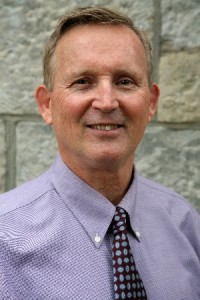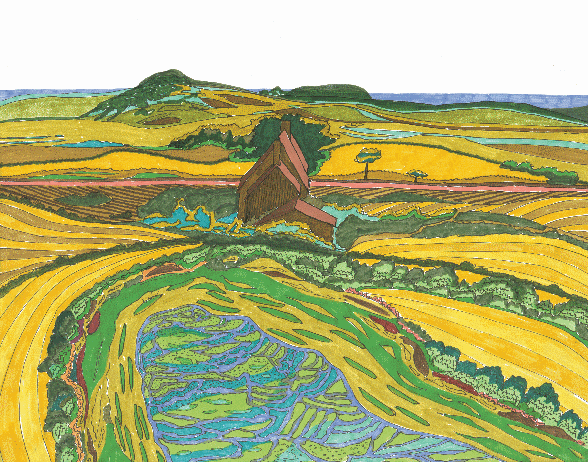 Dr. Michael P. McManmon is the founder of the College Internship Program (CIP) that serves college-aged students with learning differences and Asperger’s Syndrome in six centers across the U.S. CIP’s goal is to prepare young men and young women with skills for life, for work and for independent living. Dr. McManmon was diagnosed with Asperger’s Syndrome at fifty-one years of age. His personal struggles and ensuing victories and that of his students and staff have inspired this book. He lives in Massachusetts in the U.S.
Dr. Michael P. McManmon is the founder of the College Internship Program (CIP) that serves college-aged students with learning differences and Asperger’s Syndrome in six centers across the U.S. CIP’s goal is to prepare young men and young women with skills for life, for work and for independent living. Dr. McManmon was diagnosed with Asperger’s Syndrome at fifty-one years of age. His personal struggles and ensuing victories and that of his students and staff have inspired this book. He lives in Massachusetts in the U.S.
What led you to found the College Internship Program (CIP), and how does it work?
I had worked for private and public group homes for younger and older children for about ten years and when I moved to Massachusetts, during the era of deinstitutionalization, I wanted to open a transitional apartment program for students coming out of residential schools and institutional programs. I read Wolfensburger’s Normalization Theory while studying for my Doctorate in Special Education and wanted to implement it in a community-based program where students could experience living in normal living conditions.
The College Internship Program opened in 1984 and is a community-based program with six sites around the U.S. We offer a comprehensive curriculum for students with Learning Differences and on the Spectrum. Students live in apartments and can attend college or be involved in career studies. They learn everything from banking and budgeting to apartment skills and executive functioning skills. They have instruction in social thinking, sensory diets, wellness, etc. both in individual sessions and modules at our centers.
Why do you think it has been so successful?
The program is individualized and encompasses all the main areas that students with learning differences would need to work on. We can create an individual program of services for each student and then move them to less intensive supports as they progress. Students are assessed and given the exact services that they need to succeed.
Can you talk a little bit about your personal connection to Aspergers Syndrome?
Initially, I was diagnosed in 2004 by our Academic Coordinator (who worked for me at our center in Massachusetts). This was after operating the center for more than fifteen years. It was near the time that we first had contact with Stephen Shore and invited him out for a day to share information. It also coincided with a visit we made to see Ami Klin who was at the Yale Child Study Center. Ami referred to us as one of the foremost College Programs for Aspergers and we left there quite mystified, as we knew only a little about Aspergers Syndrome at the time. After meeting with both Stephen and Ami and my staff diagnosing me, I became fascinated with reading about Aspergers and started to formulate a comprehensive curriculum for our program.
How did your diagnosis affect your life?
My diagnosis was a huge shift psychologically for me. I realized that the goofiest parts of my personality that I was trying through my life to hide were actually my best traits. I started to be myself and to learn about how to respond socially to others, use eye contact, work as part of a team, etc. My self-esteem rose as I learned to initiate, be reciprocal and succeed at working at my goals. I was workable with others and in community. My adult children had a Dad who was a human being and not just a Human Doer. Before diagnosis, I struggled to be able to operate one small center – after diagnosis, I am able to navigate the world, have six centers, and can maintain relationships.
I feel like a child let loose in a candy store. It seems to me that I can operate like a normal adult in any area I choose to participate. I know how to ask for help, to form alliances, and I am open to change and experiencing new things in my life. I would say I am very happy.
Can you tell us a bit about your book, Made for Good Purpose – what was your goal in writing it?
The goal in writing the book was to explain from the inside out the critical variables for parents and professionals to understand in dealing with young people on the spectrum. I have been told that I serve as some kind of “emotional translator” of sorts and it is almost like I have lived a double life and am able to interpret for them the important approaches to working with their sons and daughters.
The book was a labor of love and it illustrates through stories the relevant steps that need to be taken. The overriding message is that cognitive flexibility is the hallmark of a productive, happy and healthy young adult. All other growth is predicated upon being open to change and feedback and understanding who you are and accepting it.
Read a Preview of Made for Good Purpose »
Your book contains beautiful illustrations. When did you first start drawing, and how do you find time to do this?
I started drawing as a young child and was punished for it in second grade but persisted in it. In college, I wanted to transfer to art school after taking every art course I could at my college, but my father was not supportive. I buried my art when raising six children. After diagnosis my art became reinitiated and it transformed when I allowed myself to use color for the first time about five years ago.
I draw and paint everywhere I go and I am always completing several pictures at one time. I just force myself to whip out the watercolors and pad wherever I travel.
You also write beautiful poetry – when did you start?
I started writing in the seminary in High School and I still have my writings from that time. In college, I wrote many poems and they were published in our literary magazine. I wrote a lot on my job all night in a hospital during the summer and also when I lived in the slums of Washington D.C. after college. My poetry writing came mostly to a halt when raising my children and started to reshow itself in the last five years also.
What is your next big challenge?
My next big challenge is to start Visual and Performing Arts Centers and programs at each of our six centers around the U.S. I have created one at our center in Massachusetts where we have an art gallery (Good Purpose Art Gallery) and a theatre in an old church that we have renovated called the Spectrum Playhouse. These venues provide outlets for our students for their talents and integration with the surrounding artistic community. This is not a challenge but another work of love. My passions are all about this and I feel much joy and satisfaction from continuing to work on these projects.
Another project I have started is another book entitled The Assets of Aspergers. This book is a totally positive look at the wonderful traits of those on the spectrum and how they make life better for all of us.
Copyright © Jessica Kingsley Publishers 2012.
